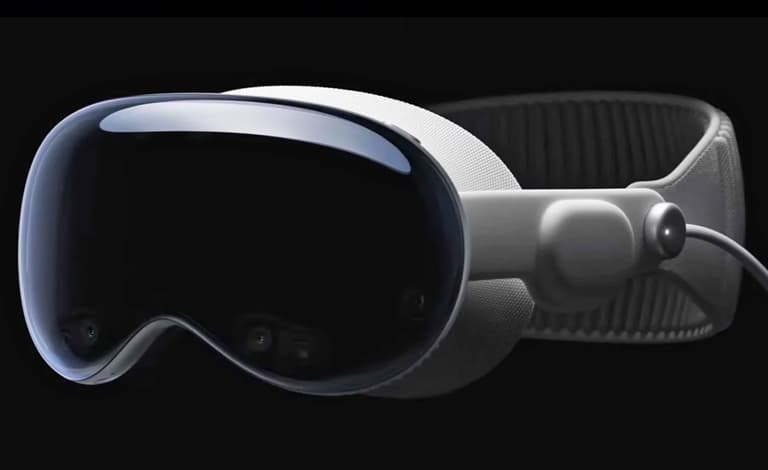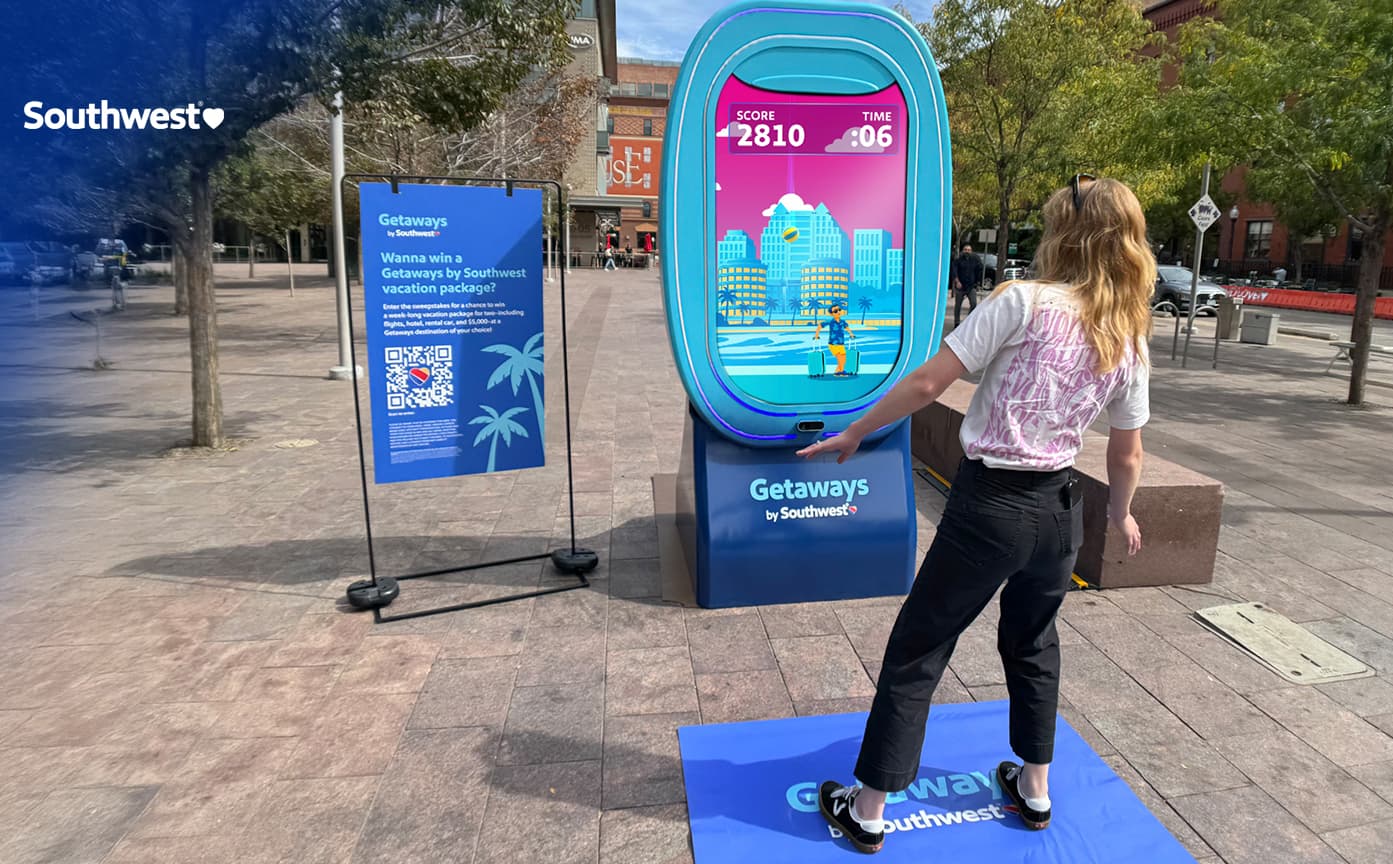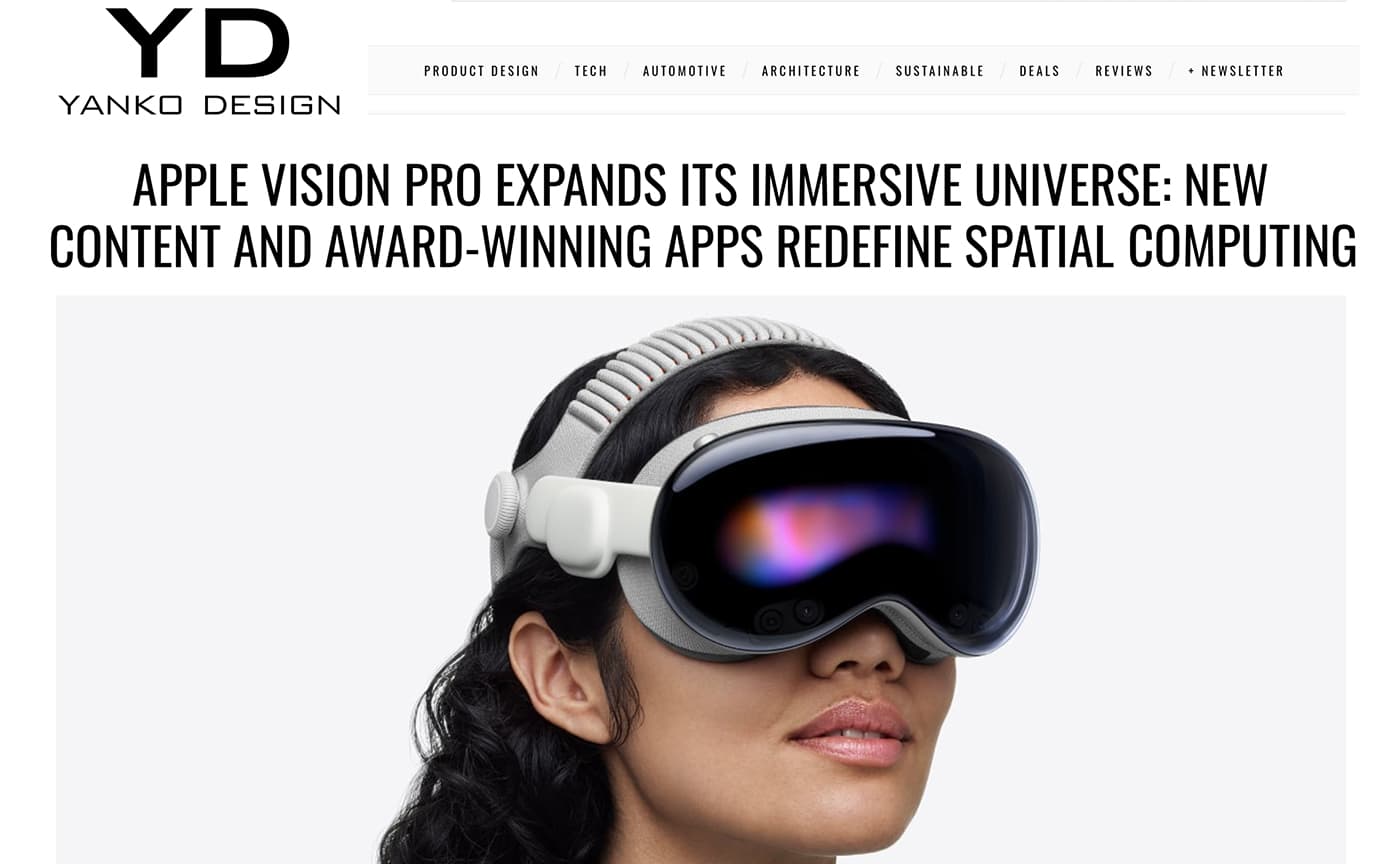The Apple Vision Pro is a groundbreaking headset product from Apple that marks a significant advancement in spatial computing. It is similar to the Virtual Reality headsets available today, like the HTC Vive Pro and the Meta Quest Pro, while simultaneously radically different. In many ways, it is amazingly better than anything out there.
Groove Jones has been in the XR (Extended Reality) space, which includes VR (Virtual Reality) and MR (Mixed Reality), since the beginning. Our team helped create some original launch content to release the Oculus Quest (now Meta Quest) and the Samsung GearVR. We also helped create the first VR experience for the HTC Vive that a brand (American Express) used for public use. So, we are very excited about the Apple Vision Pro.
But don’t call the Apple Vision Pro an AR, VR, MR, or XR device; it is a Spatial Computing headset.

Here are the key features and aspects of the Apple Vision Pro:
Spatial Computing Integration: Apple calls their device a Spatial Computer, not a VR headset. It seamlessly blends digital content with the physical space. The pass-through camera allows a user to see digital content beautifully integrated and composited into their view of the real world. Photo realistic 3D content looks real when it is viewed in your space. GUI, menus, animated content, and digital content will herald a new way of interaction in the “Spatial Computing” space.
It is the new gold standard for “Mixed Reality” applications and use. When the Meta Quest 3 came out, we saw the potential of MR use. The AVP is a technical powerhouse, and we will finally see how MR should be.

Is it a VR device too? Heck yes! The AVP can also be used to view VR content. One of the most talked-about features of the Vision Pro is its display capabilities. Each eye is treated to a custom micro-OLED display, boasting more pixels than a 4K TV. This results in an incredibly sharp and immersive visual experience, setting a new standard for clarity in the VR world.
Technology Innovations:
The Vision Pro includes 12 cameras, a LIDAR sensor, a TrueDepth camera, and IR flood illuminators for hand control in dark environments. It runs on Apple’s M2 and new R1 processors and has a ventilation system for heat dissipation.
-
- Display: Micro-OLED display system with 23 million pixels per eye.
- Spatial Audio: Advanced system with dual-driver audio pods and audio ray tracing.
- Eye Tracking: A high-performance system for precise, controller-free interactions.
- Sensor Array: High-resolution cameras for clear external vision and accurate tracking.
- Dual-Chip Design: M2 chip for running visionOS and graphics, and R1 chip for processing input from cameras and sensors.
One of the Vision Pro’s most talked-about features is its display capabilities. Each eye is treated to a custom micro-OLED display boasting more pixels than a 4K TV. This results in an incredibly sharp and immersive visual experience, setting a new standard for clarity in the VR world.
One individual eye display has the same visual fidelity as 60 original iPhones!

Applications: Much like any Apple Device, it will come with a library of Apps.
-
- Desktop-Free Apps: Users can arrange apps in their physical space, scaling them to desired sizes.
- Entertainment: Transforms any room into a personal theater with spatial audio and high-resolution displays.
- Photos and Videos: Features Apple’s first 3D camera for capturing spatial photos and videos.
- Connection: Enhances remote collaboration and meetings with life-size FaceTime video tiles and simultaneous app usage.
- visionOS: Apple’s first spatial operating system, built on macOS, iOS, and iPadOS foundations. It supports intuitive eye, hand, and voice interactions with apps that can fill and react to the user’s space.
The potential applications of the Apple Vision Pro are vast and varied. From gaming and entertainment to education and professional training, the device opens up new possibilities for interactive experiences. It’s also poised to revolutionize fields like architecture, medicine, and design, where immersive visualization can be a game-changer.

Design and Build: The device features a laminated glass and aluminum alloy frame designed to fit around the face comfortably. It includes advanced cameras and sensors for clear vision and hand input detection, spatial audio speakers, a breathable headband with a fit dial, custom micro-OLED displays, a light seal for a precise fit and stray light blocking a digital crown for immersion control, and a top button for capturing spatial videos and photos.
The outside front lens material also doubles as a display so others can see the user’s eyes, which could be the future standard for the way HMD (Head Mounted Device) is designed. Internal cameras track the user’s eyes and then display a digital version of the user’s eyes on the outside. This allows external viewers to connect emotionally with a person wearing the AVP. We will see if HMD manufacturers follow this aesthetic lead.

We see the Apple Vision Pro as a new piece of innovative hardware technology with a lot of potential in advertising and marketing, especially in experiential marketing. Fans at events and customers at conferences will want to see what all the buzz is about, and brands will want to capitalize on this. We are an approved Apple Vision Pro developer and are working on Apps for the headset now. To learn more about how we can help you create an App for the AVP, reach out to us – https://www.groovejones.com/contact/
The Apple Vision Pro represents a significant technological leap, combining advanced computing, immersive experiences, and user-friendly interfaces, all within a compact and elegant design. This product is poised to transform how users interact with digital content in their physical environment.
Learn more about the Apple Vision Pro on Apple’s website – https://www.apple.com/apple-vision-pro/




